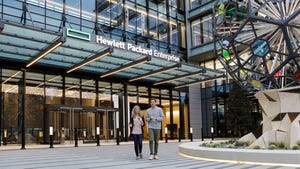High-density Open RAN trial deployed at Liverpool music festivalHigh-density Open RAN trial deployed at Liverpool music festival
The Liverpool City Region High Density Demand (HDD) Project trialled an Open RAN private network to work out if it ‘exceeds the performance of current and traditional technology solutions.’
September 2, 2024

The Open RAN 5G SA trial took place at Salt & Tar’s Music Festival, which provided a ‘real-world, high-density usage environment’ for the Liverpool LCR HDD project to test if the tech could deliver high capacity, open wifi to for e-ticketing and food and drink sales, explains the release.
More trials of the technology are scheduled to take place in the area at music, transport and sports venues to see how the new HDD network works in various settings with a high number of users in the same environment.
The Liverpool City Region HDD consortium is led by the University of Liverpool in alongside the Liverpool City Region Combined Authority (LCRCA) and ITS Technology Group. Partners include Liverpool John Moores University, ITS Technology, Aro, CGA Simulation, the Science and Technology Facilities Council (STFC) Hartree Centre, Attocore, Weaver Labs, Telet, Radisys and Qualcomm.
“I am delighted that the project has conducted its first trial in a real-world setting,” said Professor Joe Spencer, from the University of Liverpool who is leading the Liverpool City Region HDD project. “This has been a real team effort involving excellent project management and partner participation and buy in. Using this new technology in this type of setting is innovative and an ambitious project.
“This trial will provide us with data that we can analyse to assess the different components of the technology to see if it exceeds the performance of current and traditional technology solutions. We will learn more and more about the technology with every trial we conduct and I want to thank project partners and Salt & Tar for their support.”
Ann Williams, Programme Director, Liverpool 5G added: “This was LCR HDD’s first trial of Open RAN 5G SA service in a real-world high-density environment. We successfully provided connectivity for point-of-sale terminals via 5G MiFis and some public internet access using a very high capacity WiFi AP with 5G back-haul to the on-site network. In addition, we tested the 'Group QR code' eSIMs. We were able to demonstrate end-to-end functionality of the Open RAN 5G SA network and we will use the technical insights and data analysis gained from this event as we carry out further trials in the forthcoming months.”
The project is funded to the tune of £9 million courtesy of by the Department of Science, Innovation and Technology’s Open Networks Ecosystem (ONE) competition, which is supposed to provide a platform to demonstrate the feasibility and reliability of technology. There’s not much here on what data insights the trial revealed, but presumably that will be forthcoming when they’ve done some more testing.
About the Author
You May Also Like










.png?width=300&auto=webp&quality=80&disable=upscale)


_1.jpg?width=300&auto=webp&quality=80&disable=upscale)